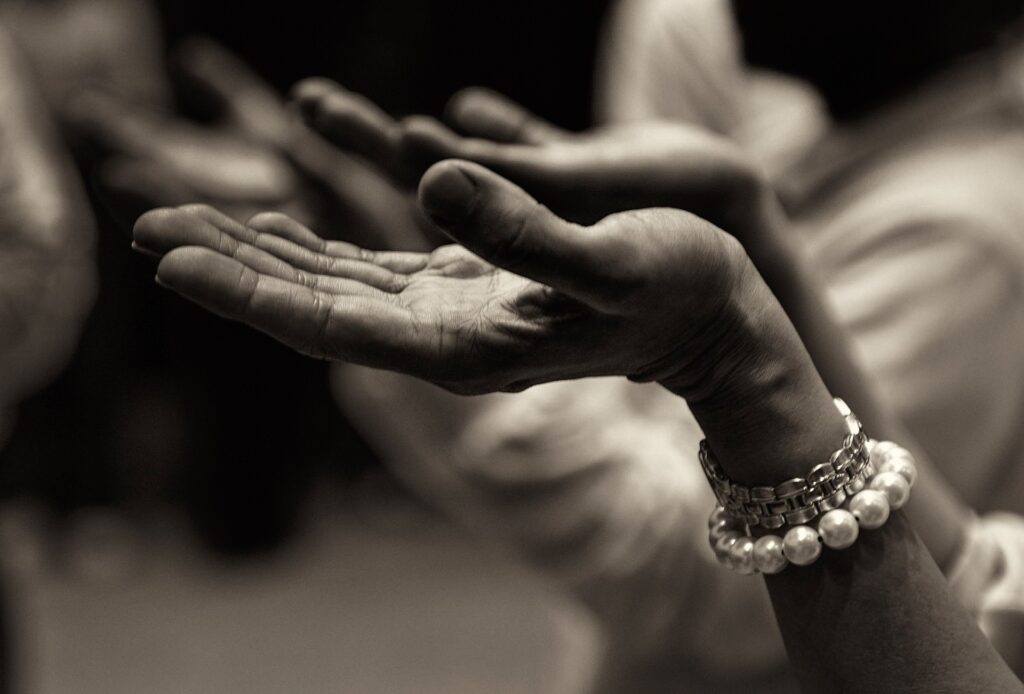 Doug Klassen, who now serves as Mennonite Church Canada’s executive minister, confessed to a fellow pastor that he couldn’t pray for more than 10 minutes. “I came to a place where I kept running into myself when I was praying,” Klassen recalls of his early days as a youth pastor. “I’d make my request, then pull up to the window.”
Doug Klassen, who now serves as Mennonite Church Canada’s executive minister, confessed to a fellow pastor that he couldn’t pray for more than 10 minutes. “I came to a place where I kept running into myself when I was praying,” Klassen recalls of his early days as a youth pastor. “I’d make my request, then pull up to the window.”
The pastor he worked with suggested Klassen try spiritual direction, a form of one-on-one spiritual accompaniment common in Catholic circles.
At Klassen’s first appointment, the priest asked, “Are you an alcoholic?” Klassen said, “No. I’m just having a hard time praying.” Due to a clerical mix-up, Klassen had ended up with a priest who normally worked with addicts. After some conversation, the priest said, “You’re a Mennonite, so you probably don’t want to pay. I’ll make you a deal.” He offered free spiritual direction in exchange for Klassen doing youth ministry workshops in his parish.
Klassen expected that spiritual direction would turn prayer into “something successful.” Instead, he says, “it completely undid me.”
“I came to realize how much of what I was doing in ministry was based upon ego and how little was driven by a deep sense of connectedness to the Spirit of God. I thought, oh my, I’m a fraud.”
Through that process, Klassen discovered a “true sense of call.”
He learned meditation and contemplative prayer. “It’s the idea of seeking God and trying to dwell with the Spirit of God in silence, just receiving, being open,” he says.
Klassen references the Apostle Paul saying, “I want to know Christ,” and talking about praying “without ceasing.”
Klassen’s journey has been about dying to self, coming to the end of one’s ego. “It kept me in ministry,” he recalls. “I would have run out of gas” otherwise.
Despite years of following this path, Klassen says, “I’m a beginner.”
‘I didn’t know how to pray’
 Claire Ewert Fisher is another Mennonite whose spiritual path took a similar detour. While serving with Mennonite Central Committee in the Philippines in the 1980s, a sense of crisis closed in on her. Her children were far away at boarding school. Work limited time with her husband. Plus, there was the disorientation of an unfamiliar and remote setting.
Claire Ewert Fisher is another Mennonite whose spiritual path took a similar detour. While serving with Mennonite Central Committee in the Philippines in the 1980s, a sense of crisis closed in on her. Her children were far away at boarding school. Work limited time with her husband. Plus, there was the disorientation of an unfamiliar and remote setting.
“I lost connection with my reality . . . [with] the things that sustained me,” she recalls. “I found I didn’t know how to pray.”
She needed something more.
She was seconded to a Catholic organization and had become intrigued by its members’ spirituality. She went to a nun for spiritual direction. She soon found the “more” she longed for. “It wasn’t too far into my prayers that I found myself falling in love with God,” she says. “When I started contemplative prayer, it became an intimate relationship.”
She says contemplative prayer is more listening than talking, “giving God a chance to transform us from the inside. . . . It’s an integration into another way of being present, being open to God.”
Upon her return from the Philippines, Ewert Fisher became involved at Queen’s House, a Catholic retreat centre in Saskatoon, where she worked for five years in the 1990s.
Now, Ewert Fisher—who pastors at Mount Royal Mennonite in Saskatoon and Rosthern Mennonite—serves on the spirituality resource team of Mennonite Church Saskatchewan, which has offered contemplative seminars in over half of MC Saskatchewan’s churches. The team now offers silent retreats.
Diversity in contemplative prayer
Contemplative prayer can take various forms. In a Sunday service, Ewert Fisher has used a guided meditation, inviting congregants to imagine walking through a forest and meadow to a beach where Jesus meets them. After some interaction, Jesus departs and the others return home.
Ewert Fisher tells people not to be afraid of imagination, as she was once taught. She also believes it is essential to “test” what one hears in prayer with Scripture and others.
Another form for contemplative prayer starts with the verse, “Be still and know that I am God.” Repeating the line, a leader gradually trims the line, until it is just “be,” which leads into silence. Then participants come out of silence hearing the verse lengthened back to the original.
Both Ewert Fisher and Klassen talk about holding others in the presence of God, more than articulating desires for them.
Often contemplative prayer is just silence. A receptivity, restfulness, waiting. “You might not feel different,” says Ewert Fisher, “but you are opening yourself.” Over time, you may see God in new ways in your experience.
Of course, contemplative prayer is foreign to many Mennonites. “It doesn’t connect with everyone,” says Ewert Fisher.
Klassen agrees, adding that, while there is some suspicion, people who feel their prayer is just “transactional” might want to consider it.
Related story:
Praying without words









Leave a Reply
You must be logged in to post a comment.